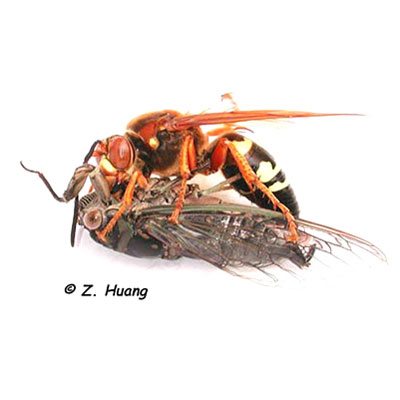Question of the Week: July 23, 2020
“What are the big (1-1/2-inch) yellow and black bees that are hovering near the ground? What can I use to kill them?”
I get this question many times every summer. They seem as big as boxcars, and they fly knee-high about 1 mph. But what are they looking for?

They’re predatory insects called cicada-killers, and they’re looking for the noisy cicadas that they find on the ground or on tree trunks from late May into mid-summer.
If you’ve ever witnessed the capture, suddenly you hear a huge noise and you realize they have attacked from the back of the cicada. They sting the insect, injecting their toxin to paralyze and kill it, then they carefully fly and drag it back to their nest, a tunnel in the ground, where they pull it into the soil and proceed to lay eggs within the carcass.
The eggs hatch and the larvae feed on the cicada’s body before emerging the following spring to start the cycle all over again.
But are cicada-killers, also known as dirt wasps, of any concern to us humans? Very rarely. Unless you encounter one with bare hands or step on one with bare feet, they’re probably not going to be of any threat to you or your family.
So, this is another example of where it’s fine just to leave Mother Nature alone and marvel at what she’s doing on your behalf.
Here are a couple of university websites that give you more details.
Rutgers (New Jersey’s ag college): https://njaes.rutgers.edu/fs040/
Ohio State:
https://ohioline.osu.edu/factsheet/ENT-63
University of Kentucky:
https://entomology.ca.uky.edu/ef004
